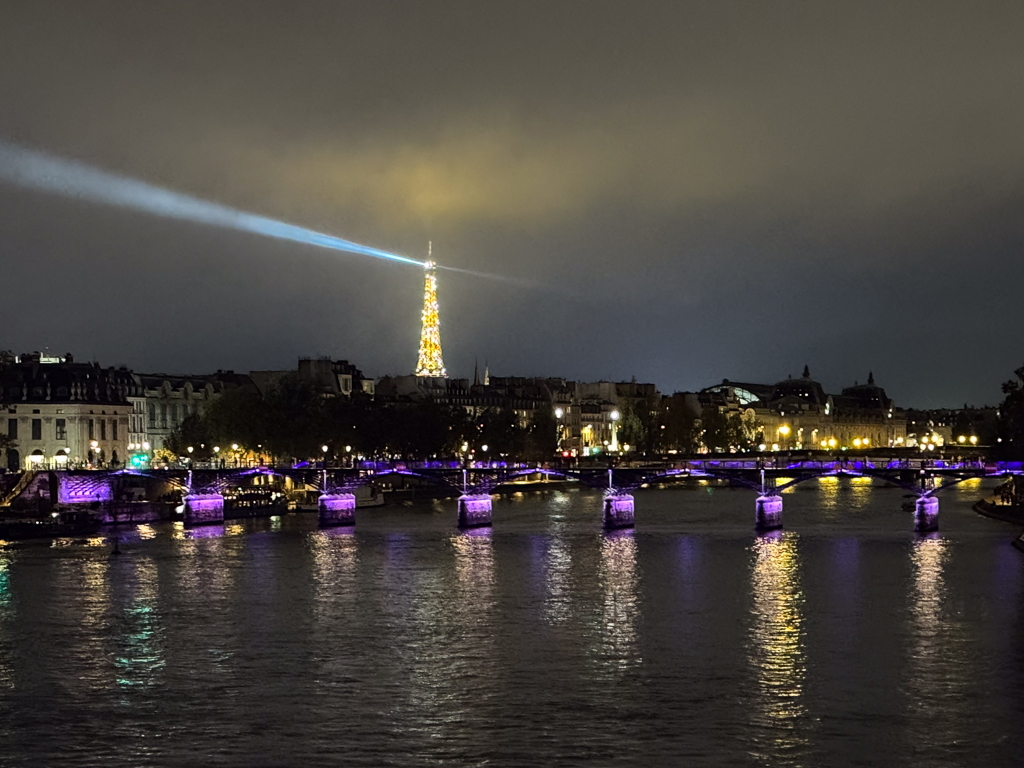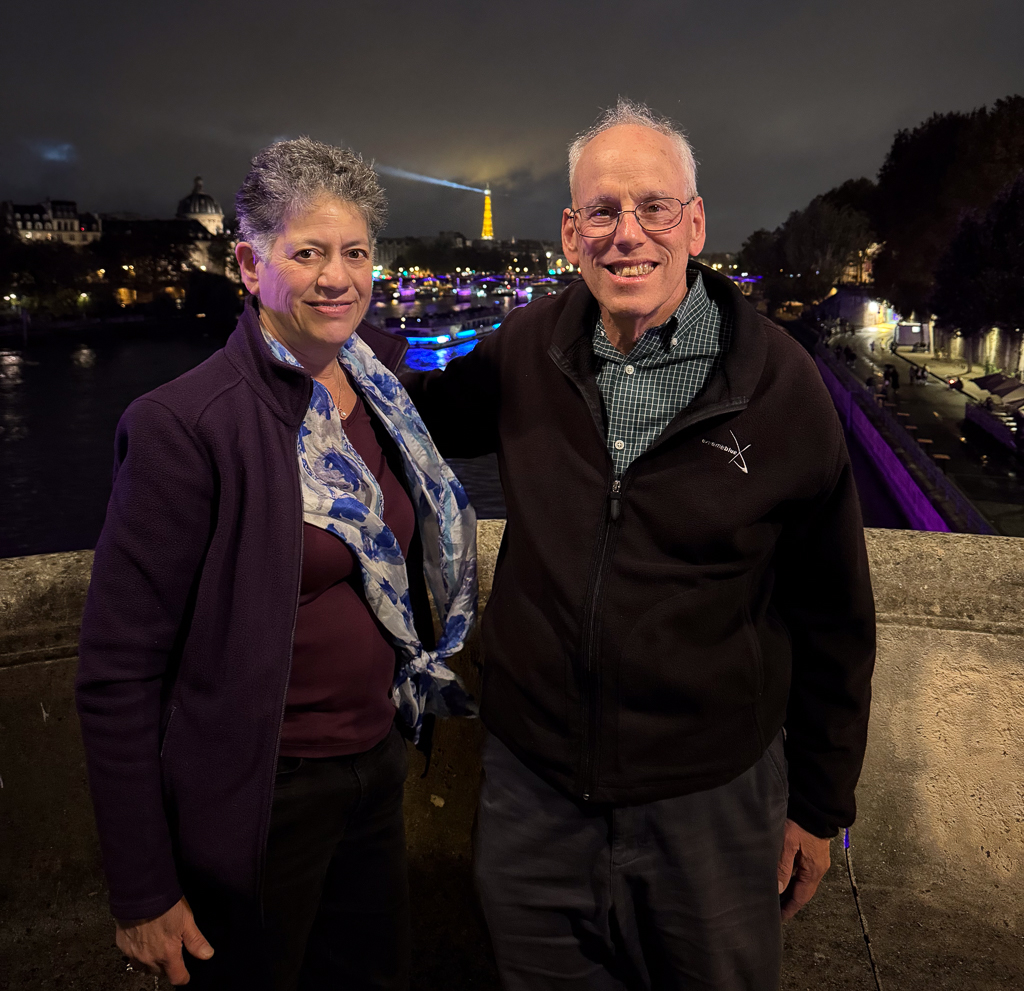One of the things I really like about Paris is the specialist food shops; this morning, we visited the local greengrocer and bakery to put together a simple, fresh, tasty breakfast. After breakfast, we headed to the Metro for a quick trip to Abbesses station to join Paris Walks‘s Montmartre walk.
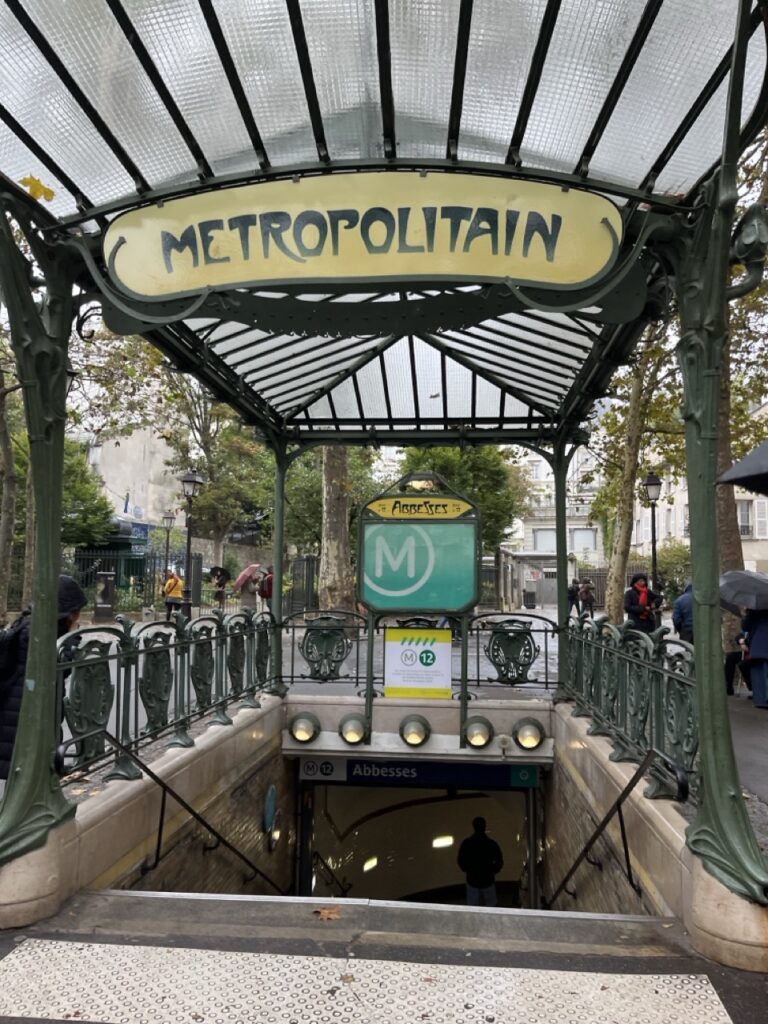
Our guide Brigitte took us on a gentle walk from Abbesses to Sacre-Coeur, stopping frequently to show us points of interest or discuss many of the artists, filmmakers, performers, and writers who have lived in Montmartre over the years.
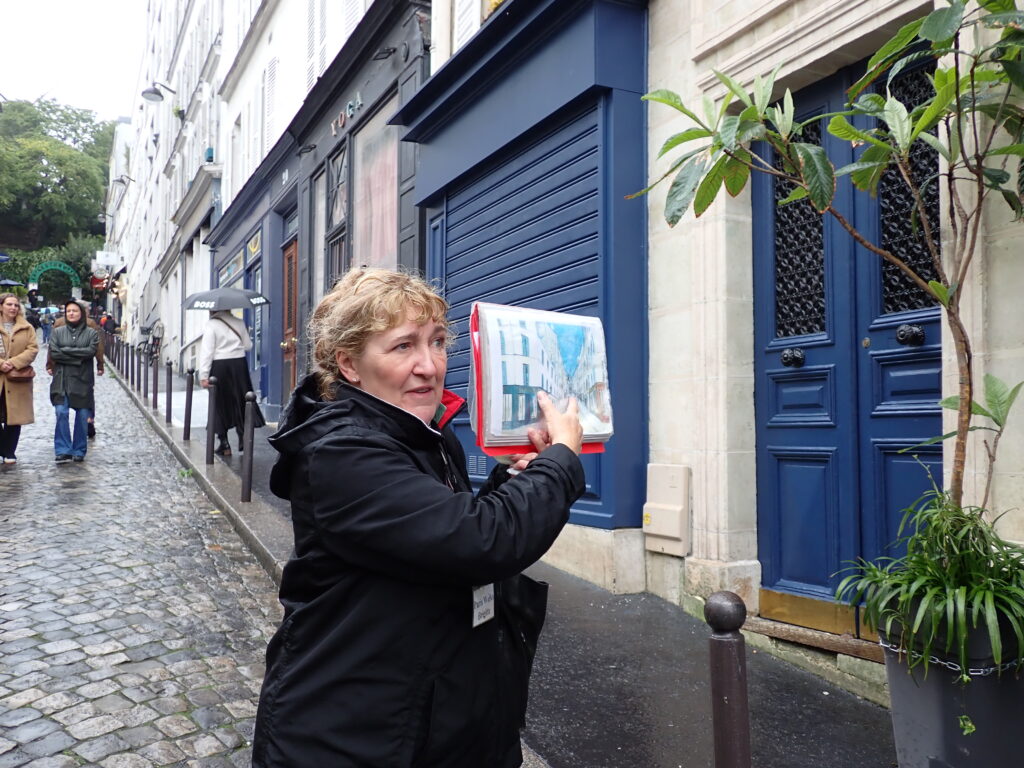
We started very near the station at the “I Love You” wall, with over 300 versions of “I Love You” in over 200 different languages – even Braille (but, since it’s painted on, it’s not useful for anyone who needs Braille).
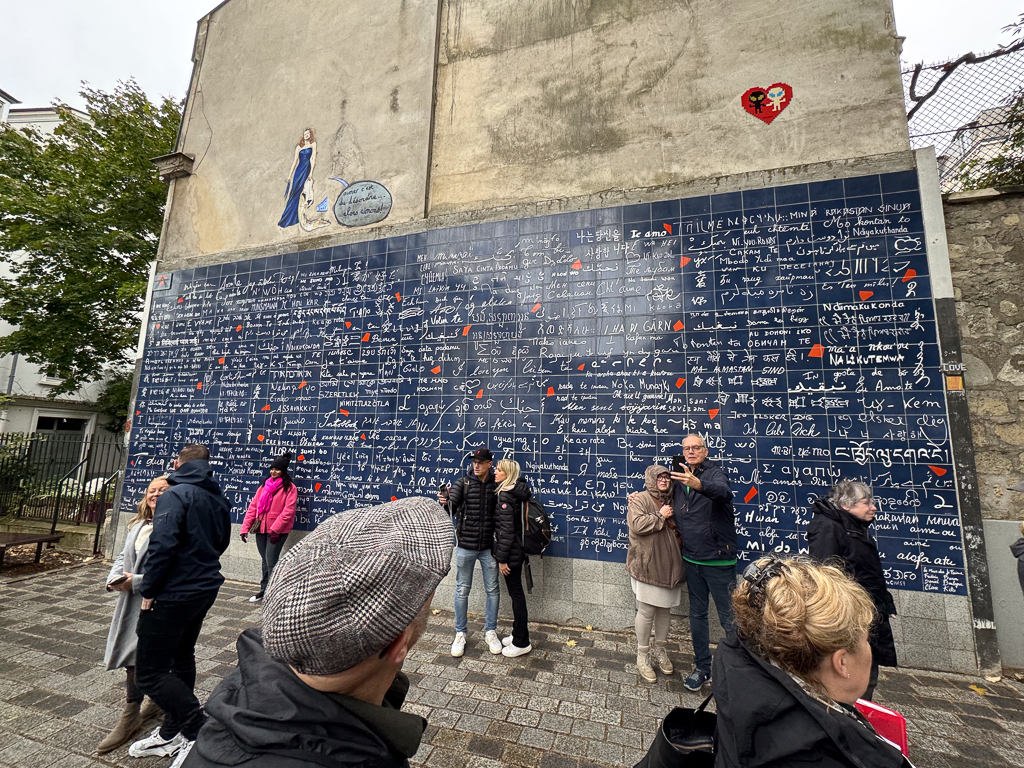
Van Gogh lived in this house – Theo van Gogh, that is. He was Vincent’s brother and an art dealer who somehow never sold any of Vincent’s paintings (Vincent sold exactly one during his lifetime).
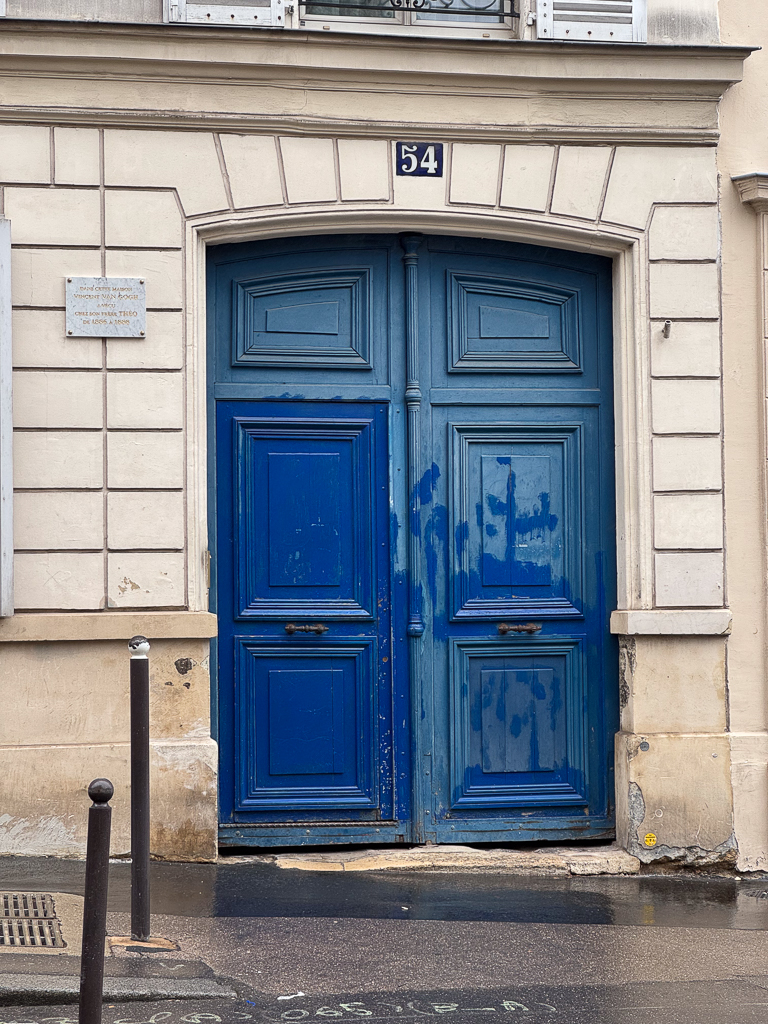
We got our first sight of the famous Moulin de la Galette on the next segment of our climb, and got much closer to it a few minutes later.
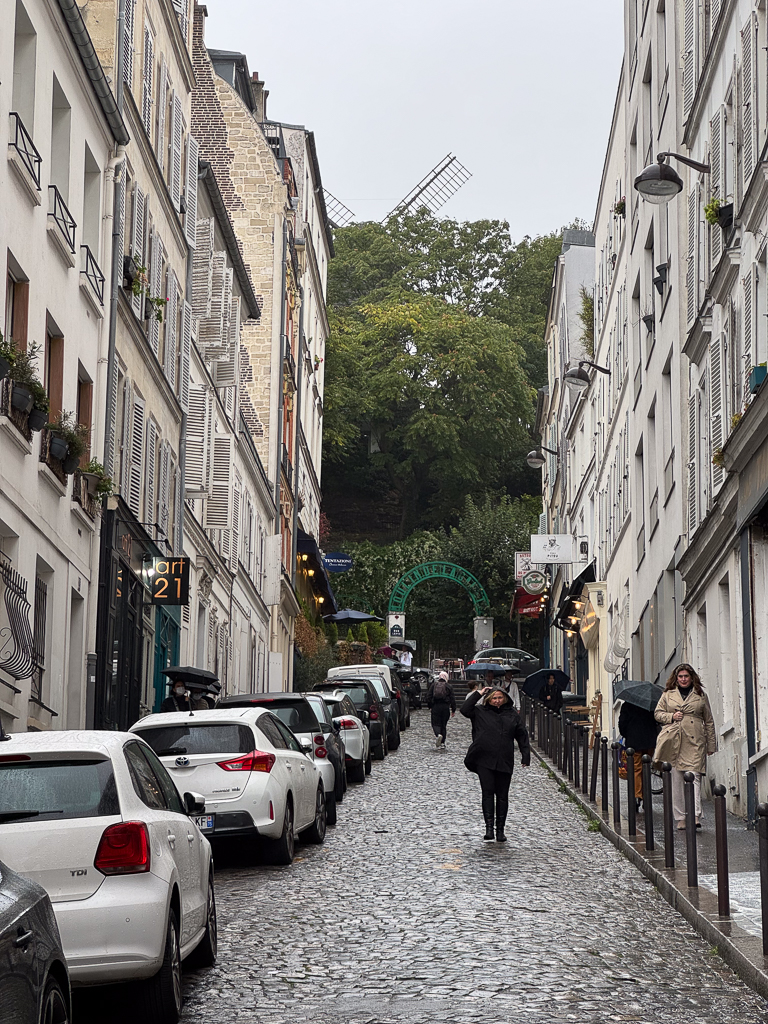
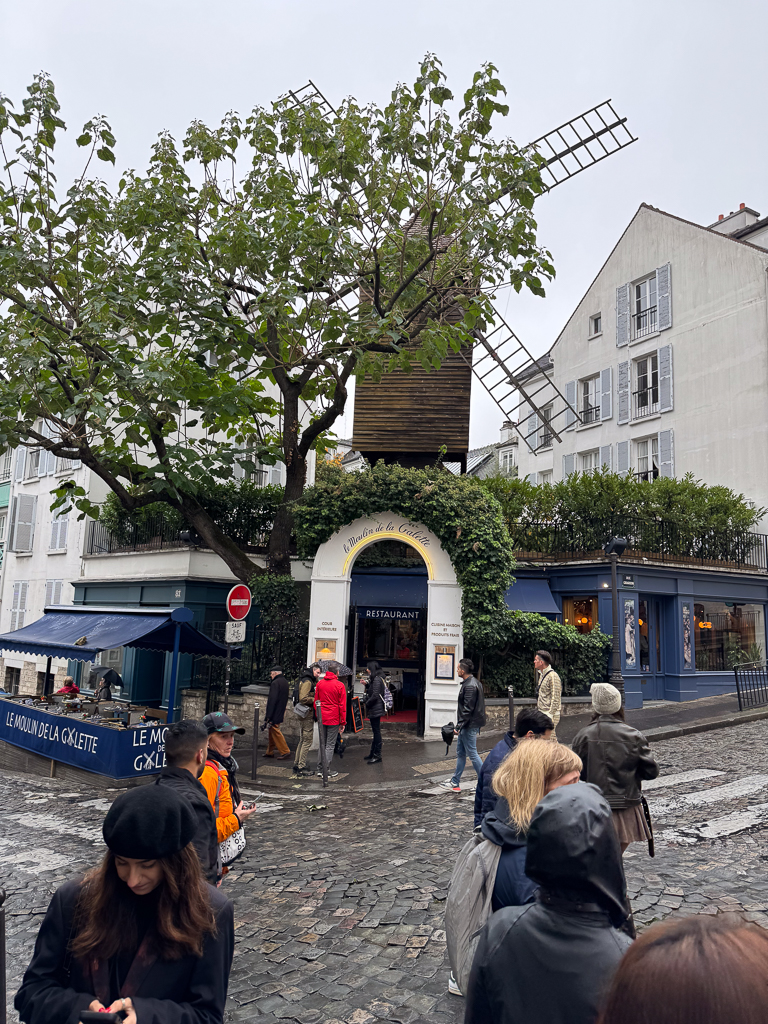
We continued with a brief stop at The Man Who Could Walk Through Walls in Place Marcel-Aymé, where Brigitte told us the story.
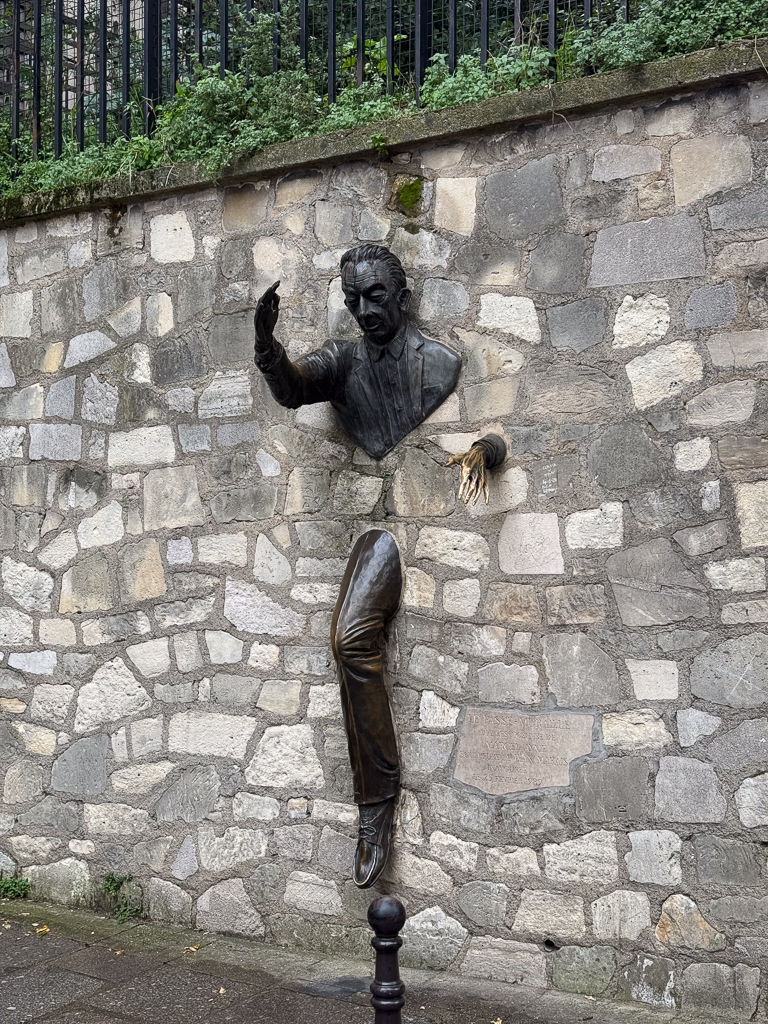
There’s a statue of Saint Denis, the patron saint of Paris, in a park a few minutes farther along. It depicts him immediately after his martyrdom as he walked through the city holding his head in his hands until he found the place where his cathedral should be built. As Brigitte said, “he had a very bad hair day that day”.

Not everything we saw was historic; we made a brief stop outside La Maison Rose, which apparently is important in “Emily in Paris”. I haven’t seen the show, but the crowds outside the restaurant (which was closed) seemed to be happy to be there.
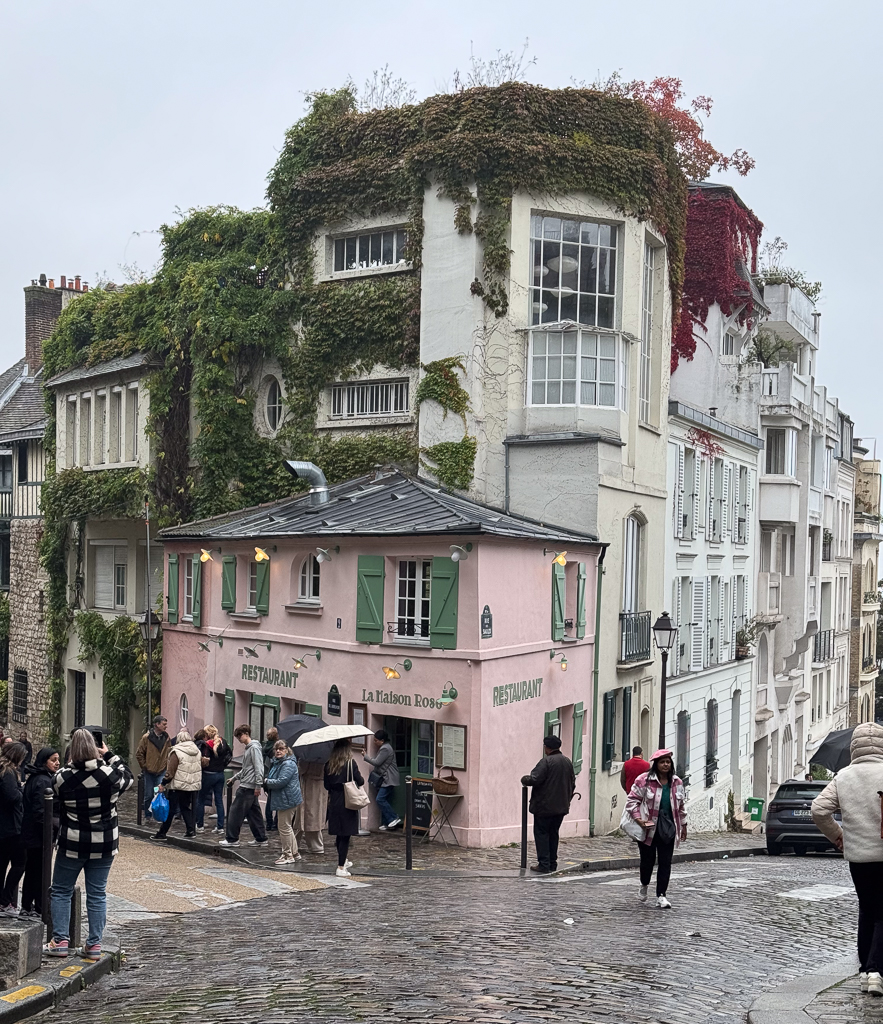
We took a quick look at the oldest church in Paris, Saint-Pierre Church, which dates back to the 12th century CE. Diane and I went back there after the tour so we could go inside, and I’m glad we did (though I don’t have any interesting photos from the inside).
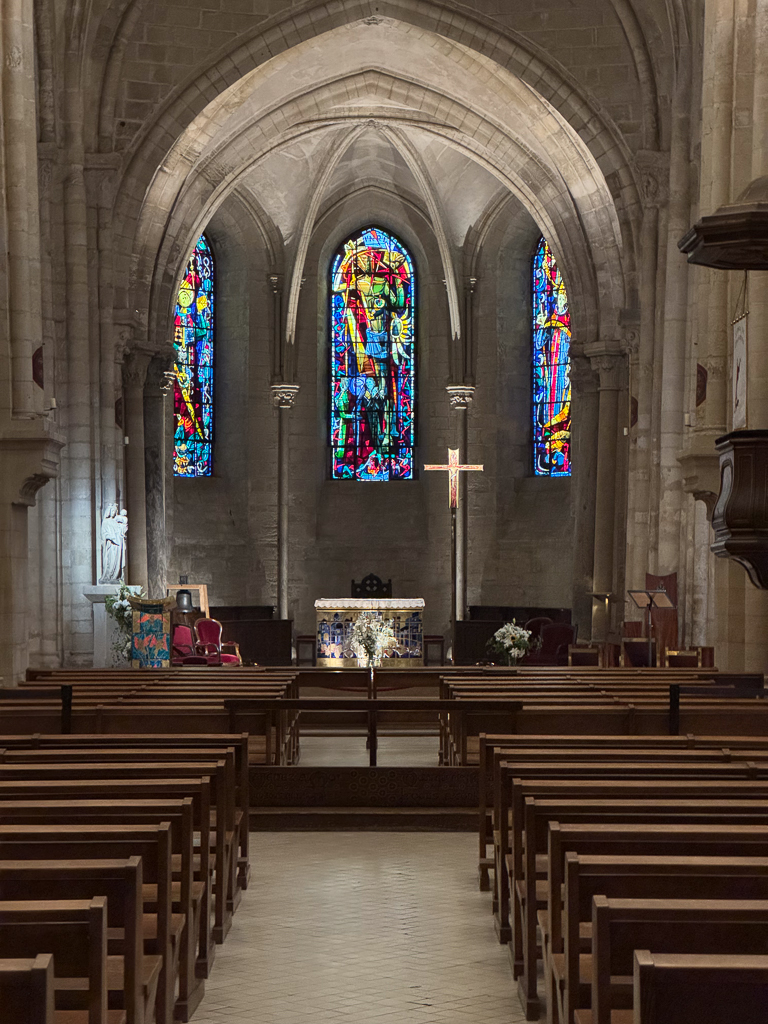
Our final stop was in front of Sacre-Coeur. Guiding is not permitted in the church, so Brigitte bade us farewell and left us to choose our own adventures for the rest of the day.
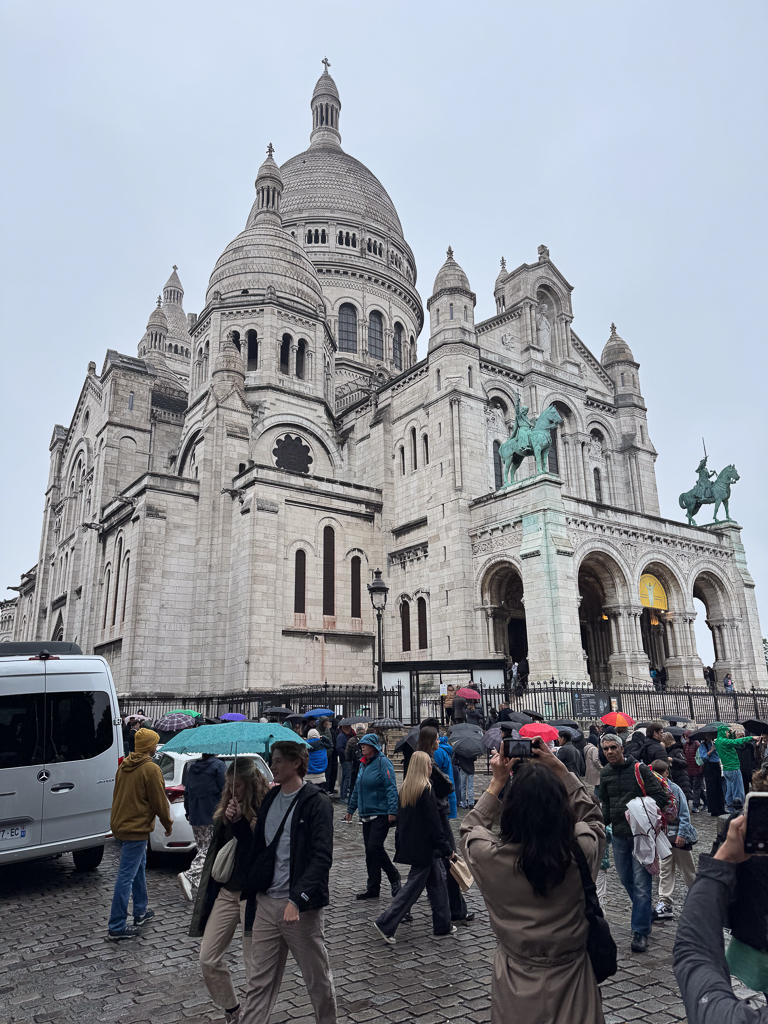
We walked back to the Square of the Artists, which is lined with restaurants; local artists set up shop there and sell their wares. We had lunch at Chez Eugene, which was OK, especially for a tourist area, but not exciting.
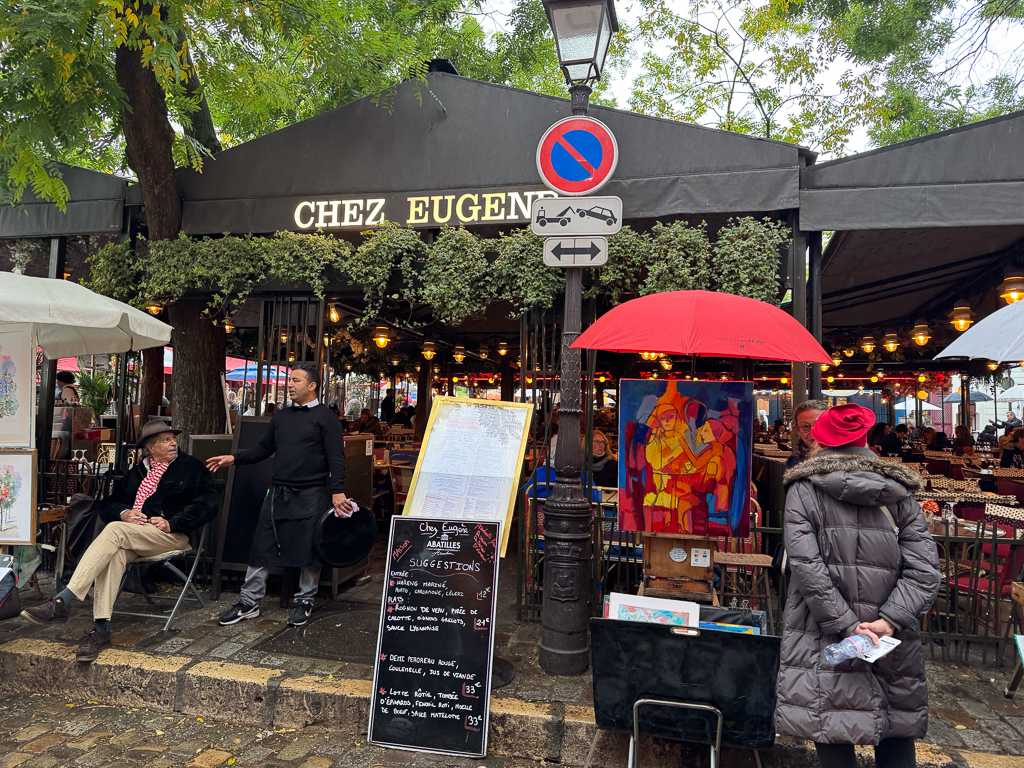
Brigitte had taken us past the Museé de Montmartre on our tour and said it was one of her favorite museums in Paris; she’d been such a good guide that we decided to take a look and wound up spending most of the afternoon there. It was in a house that had been occupied by many artists over the years, including Utrillo, his mother Suzanne Valadon, Renoir, and more. They’ve restored Utrillo’s room and Valadon’s studio; there were also lots of paintings to enjoy, as well as posters highlighting Montmartre’s role as a bohemian hub of activity (and as the home of the Paris Commune of 1871).
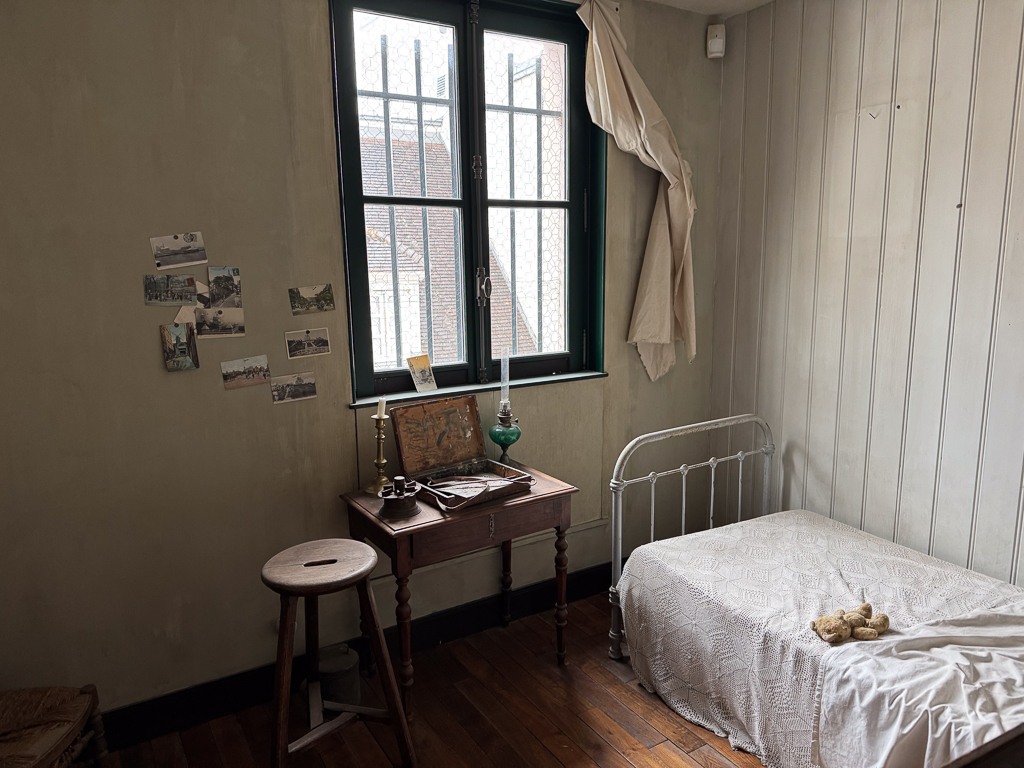
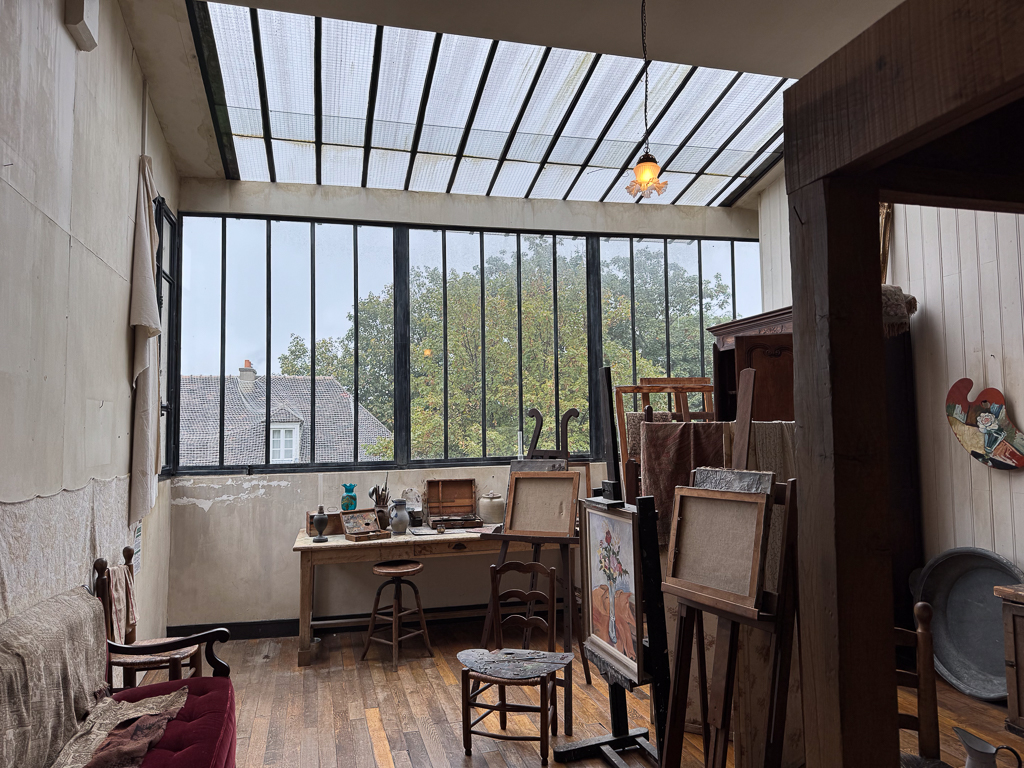
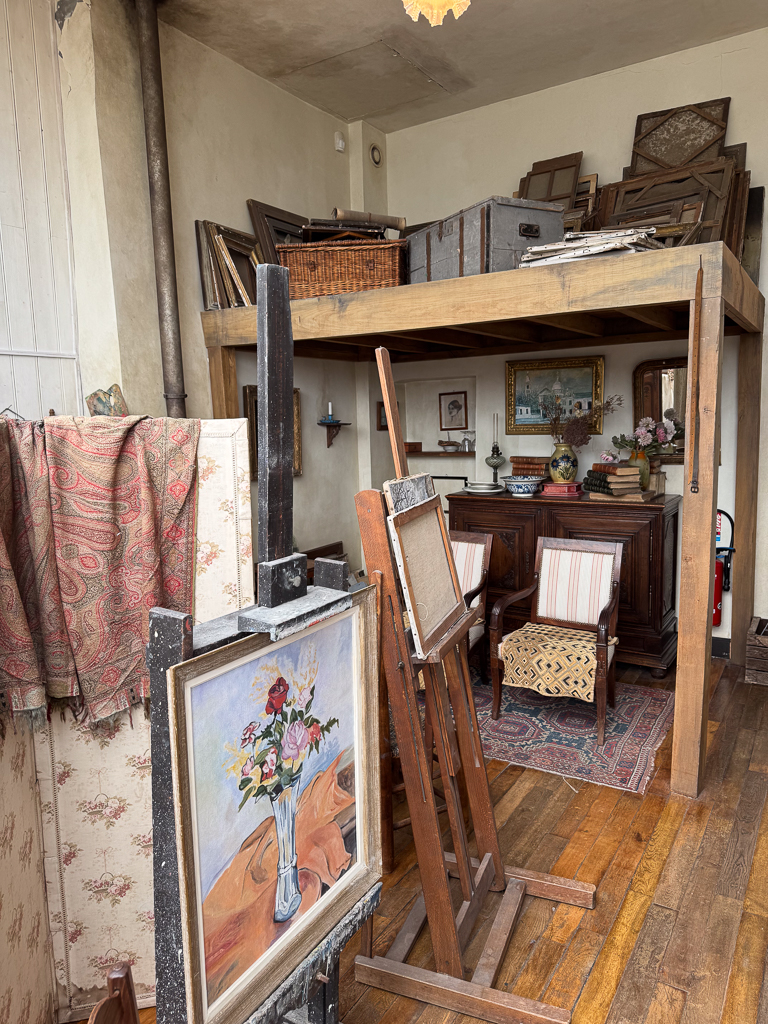
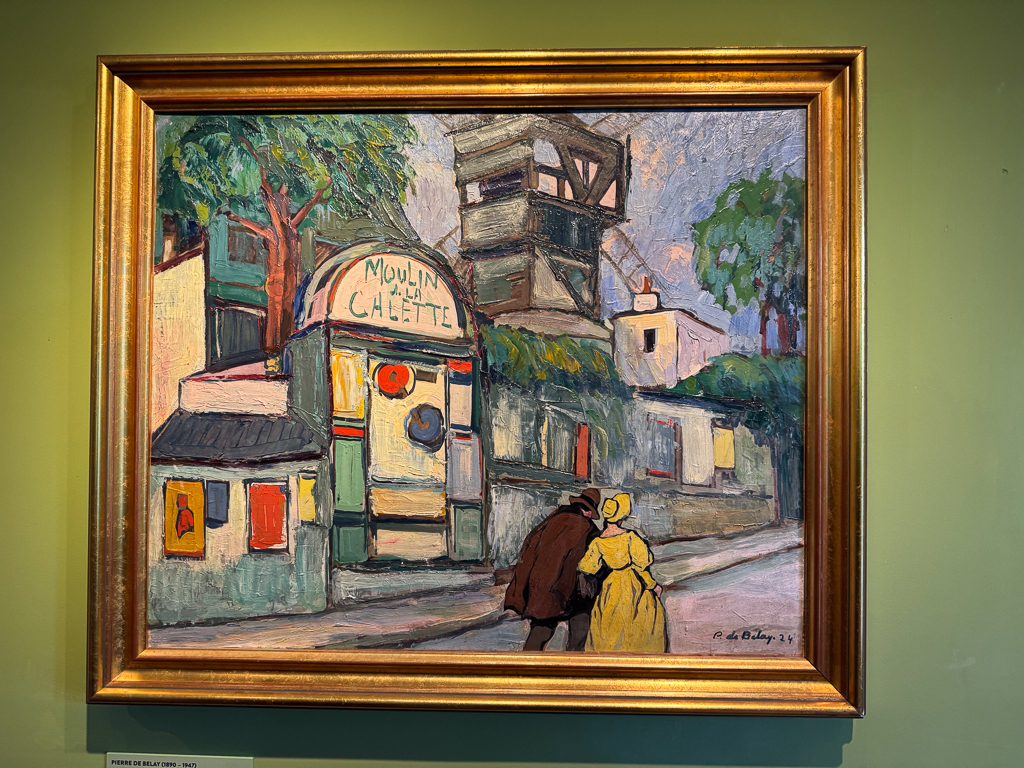

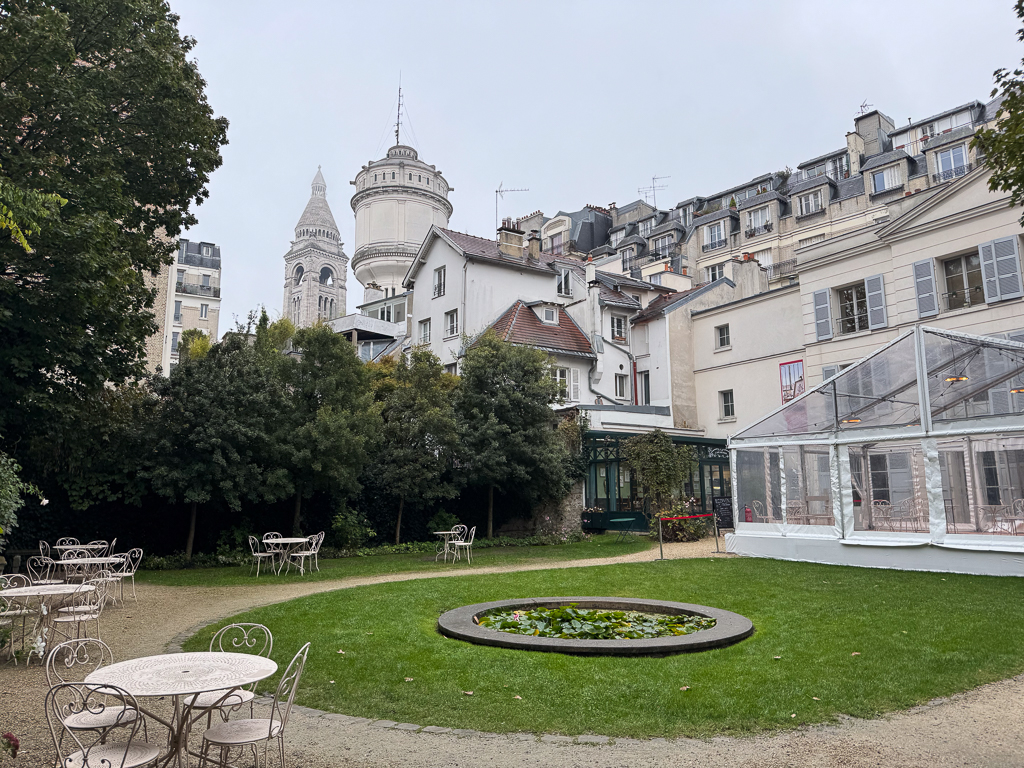
We walked back to Abbesses station; along the way, we took a look at Saint-Jean Church, which was the first reinforced concrete religious building in France.



As always, Paris Walks delivered a great experience, and I was glad we had time to explore Montmartre afterwards.
We walked back to our apartment and then headed out for dinner at Rarita, a nearby Italian restaurant we’d passed on our walk home. It was very very good; we had the 21EUR prix fixe dinner along with a half-bottle of unpretentious (and fairly inexpensive) Bordeaux.
We hadn’t had enough walking yet, so we set off for Pont Neuf after dinner and got our first view of the Eiffel Tower for this trip. We were there at the top of the hour, so the Tower was sparkling just for us!
